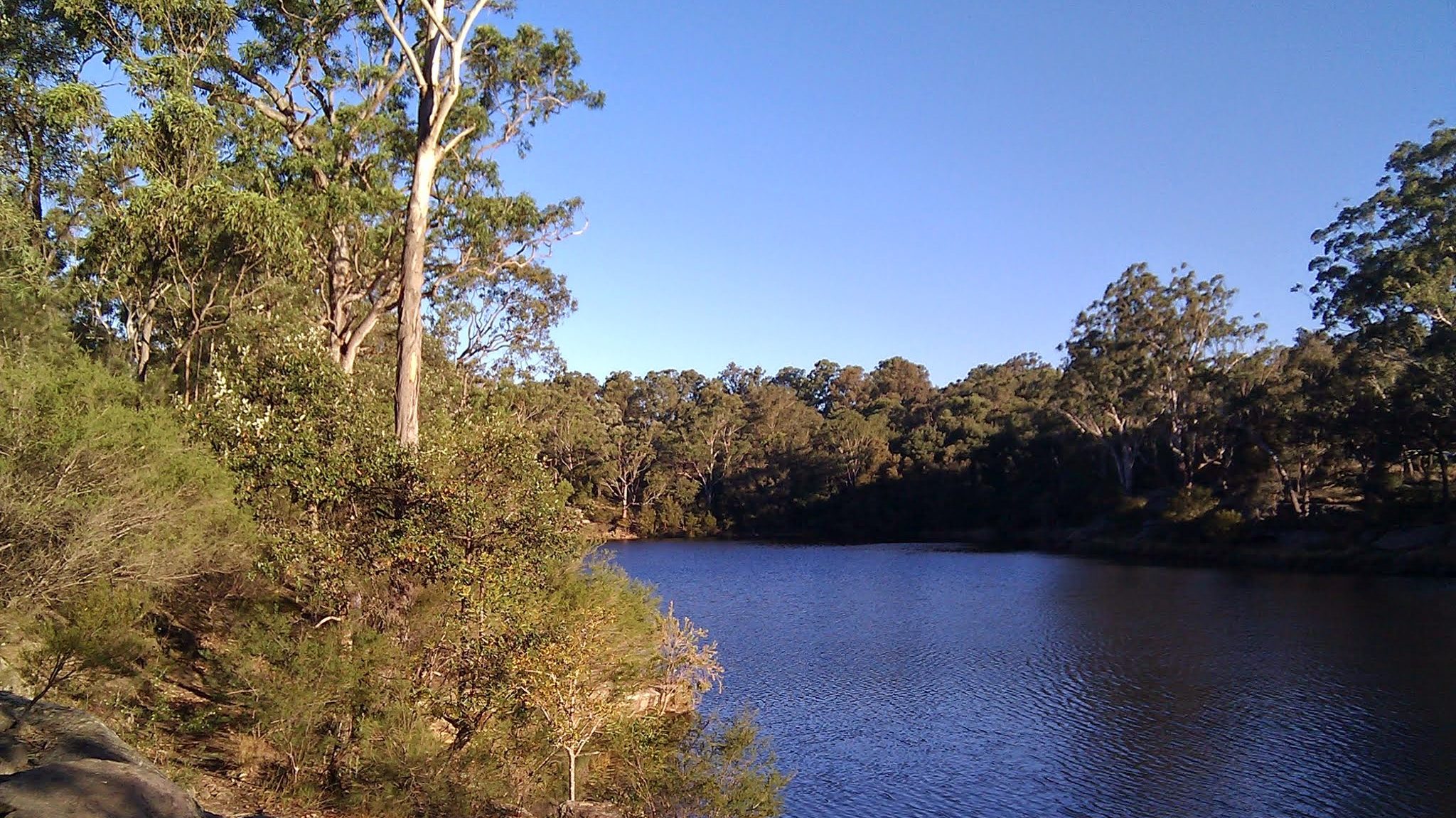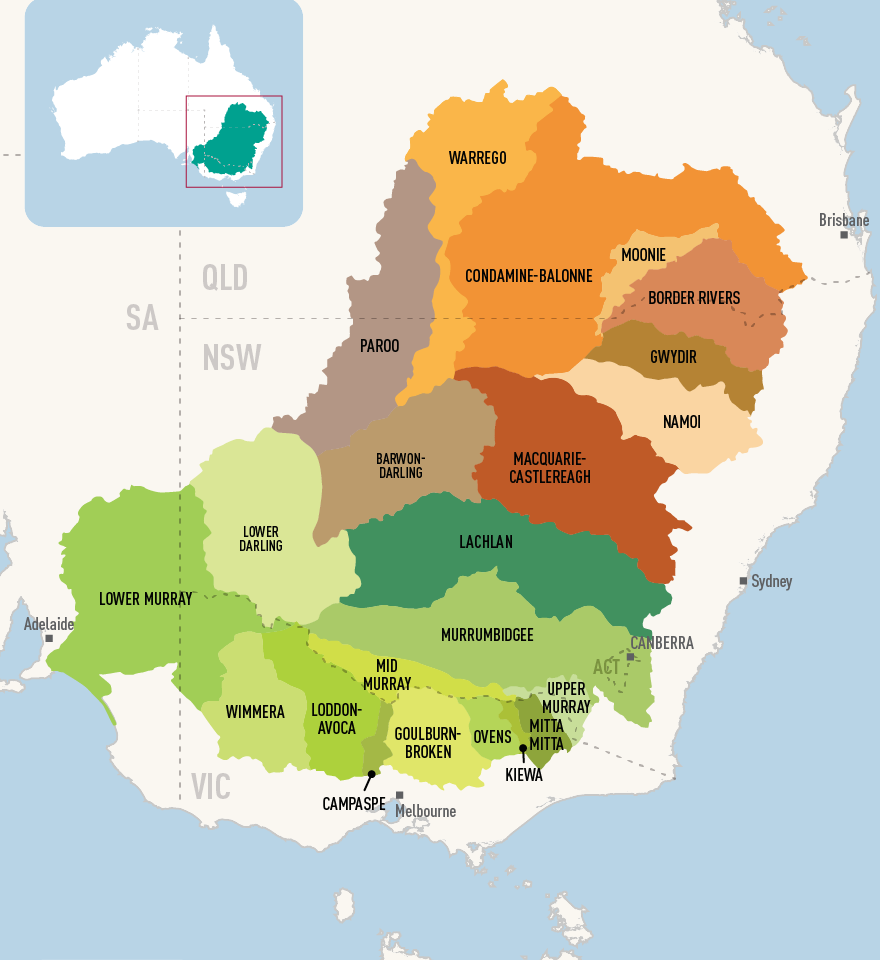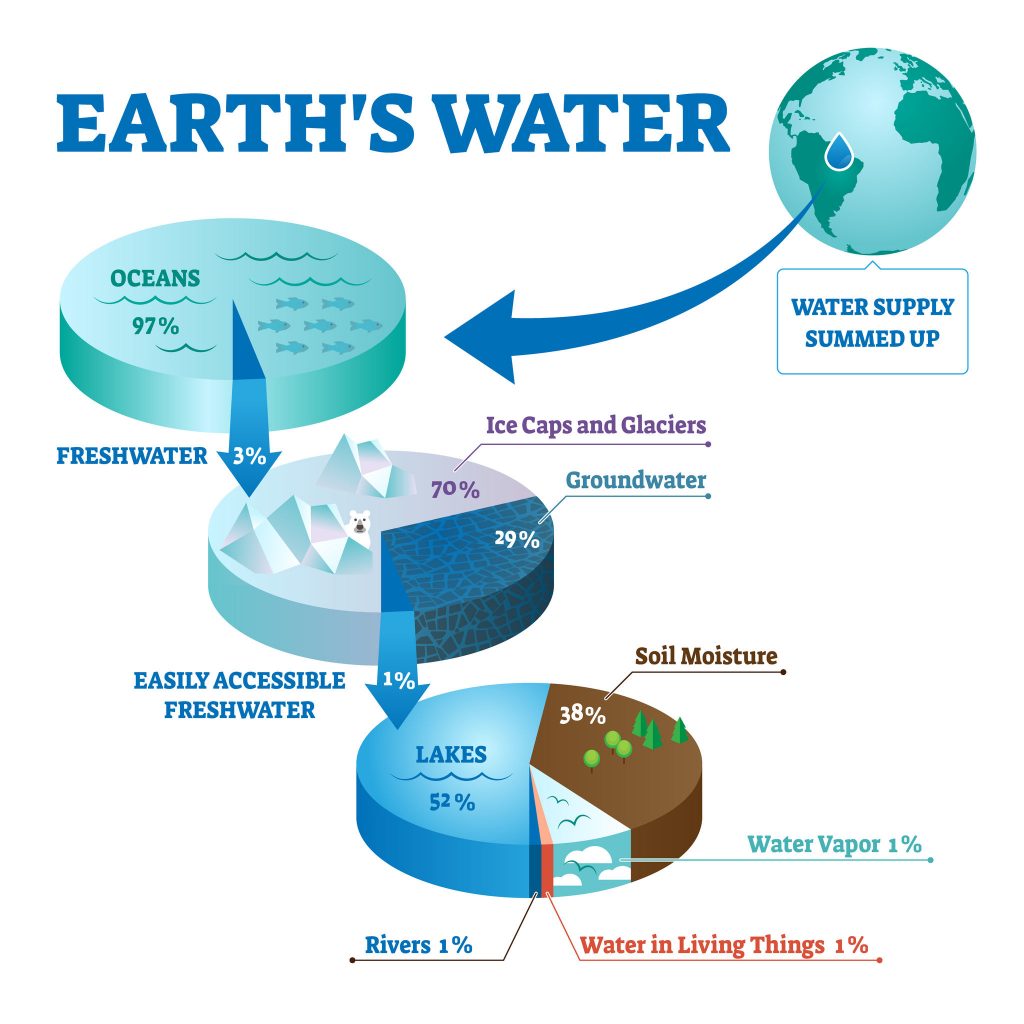A catchment is an area where water is collected by the natural landscape. A catchment is usually surrounded by hills or mountains. Gravity causes rain, melting snow and other water in the catchment to run downhill where it flows into creeks, rivers, lakes and eventually the ocean. The water that seeps below ground and settles in the soil and the space between rocks is called groundwater.

The Murray Darling basin is a largest catchment in Australia and drains around one-seventh of the Australian land mass. The Murray–Darling Basin is an interconnected system of rivers made up of 22 different catchments.

Water covers 75% of the earth’s surface, however only a very small amount is fresh water that can be used directly by people, animals and plants because:
- 97% of this water is in oceans and is too salty for people, animals or plants to use
- 2% is frozen at the north and south poles, in glaciers and on snowy mountain ranges.
Only 1% of the Earth’s water is easily accessible freshwater.

Illustration © Normaals
Water is essential for all forms of life and the small amount of available freshwater create competing pressures for our water resources. Different land uses in a catchment have different water use needs. In Australia agriculture is the largest water-consuming industry.
These different stakeholders that have an interest in how water is used across the catchment. These typically include governments, industry, scientists, environmental organisations, landowners, and local users of water like you.
Find out the catchment where you live in Australia
Creating connections
Aquatic ecosystem connectivity refers to the connections between and within aquatic ecosystems. Understanding the connections of the surrounding land to wetlands and between other wetlands is important for effective catchment management. For example, when looking at prioritising wetlands for management actions in a catchment, a wetland that provides refuge for wildlife in a dry landscape may be given priority.
Catchment Management
This activity investigates the journey of a river through the catchment. Follow water through the environment and explore the changes to water quality over time. This learning activity is part of a sequence of 5 individual learning activities focused on Catchment Management.
- The story of a river
- Water sustainability
- What’s in a drop?
- The drain is just for rain
- Where the river meets the sea
Other useful Resources
Why is Water Important
Water is the most common substance found on earth, so why is it important? Water is essential for all forms of life and can dissolve nearly anything. It can exist as a gas (water vapour and steam), a liquid (water) and a solid (ice).
The Natural Water Cycle
The natural water cycle shows the constant movement of water around the world. Water moves through the processes of evaporation, transpiration, condensation, precipitation, run-off, infiltration and percolation.
The Urban Water Cycle
The natural water cycle has been modified by people to ensure a constant water supply and the safe disposal of wastewater. The Urban Water Cycle incorporates the Water Supply System, Wastewater system and the Stormwater system.

